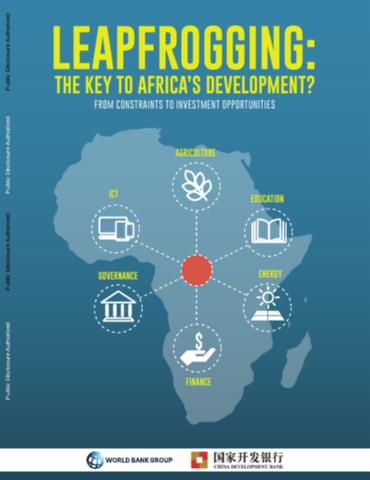Leapfrogging: the key to Africa's development?
 Despite sustained economic growth over the past two decades, Sub-Saharan Africa faces massive challenges and significant gaps in many development outcomes. Although poverty has been declining, a recent report estimates that over two-fifths of the African population was poor in 2012. Nearly two-thirds of Africans do not have electricity. Less than one quarter of African enterprises have loans or lines of credit; the corresponding share among firms in non-African developing countries is almost half. The use of formal financial services is concentrated among the richest 20 percent of the population. Most African countries have made significant gains in access to education, but learning remains weak. The agriculture sector, which employs a large share of the labor force, exhibits low productivity. Technological change and levels, which are the drivers of productivity, are much lower compared to other parts of the world. Even simple productivity-enhancing factors like the use of fertilizers has remained flat for decades. Africa’s large infrastructure, technology, and policy gaps require disruptive solutions and thinking outside of the box. Yet, development policies have often been primarily programmatic and mostly incremental. This book argues that it is time to go back to basics of development, think big, and foster the environment for more innovation and technology adoption, to provide the chance for Africa to experience major positive transformations. This is not a new idea; to the contrary, it is what economic theory and history teach. While it has become customary in the development practice to highlight and quantify constraints to investing in Africa, this book argues that those constraints must be and transformed into investment opportunities. Several factors, such as skills, service delivery, access to finance, energy, to name the few, are often pointed out as constraints to investment. Treating those constraints as investment opportunities, attracting the private sector, both domestic and foreign, and creating a conducive environment for technological diffusion is precisely how Africa will harness innovation toward its prosperity.
Despite sustained economic growth over the past two decades, Sub-Saharan Africa faces massive challenges and significant gaps in many development outcomes. Although poverty has been declining, a recent report estimates that over two-fifths of the African population was poor in 2012. Nearly two-thirds of Africans do not have electricity. Less than one quarter of African enterprises have loans or lines of credit; the corresponding share among firms in non-African developing countries is almost half. The use of formal financial services is concentrated among the richest 20 percent of the population. Most African countries have made significant gains in access to education, but learning remains weak. The agriculture sector, which employs a large share of the labor force, exhibits low productivity. Technological change and levels, which are the drivers of productivity, are much lower compared to other parts of the world. Even simple productivity-enhancing factors like the use of fertilizers has remained flat for decades. Africa’s large infrastructure, technology, and policy gaps require disruptive solutions and thinking outside of the box. Yet, development policies have often been primarily programmatic and mostly incremental. This book argues that it is time to go back to basics of development, think big, and foster the environment for more innovation and technology adoption, to provide the chance for Africa to experience major positive transformations. This is not a new idea; to the contrary, it is what economic theory and history teach. While it has become customary in the development practice to highlight and quantify constraints to investing in Africa, this book argues that those constraints must be and transformed into investment opportunities. Several factors, such as skills, service delivery, access to finance, energy, to name the few, are often pointed out as constraints to investment. Treating those constraints as investment opportunities, attracting the private sector, both domestic and foreign, and creating a conducive environment for technological diffusion is precisely how Africa will harness innovation toward its prosperity.
Related Content
- Making the leap: the need for Just Energy Transition Partnerships to support leapfrogging fossil gas to a clean renewable energy future
- Counting the cost 2021: a year of climate breakdown
- Powering smart grids: opportunities to future-proof energy infrastructure in Africa
- The renewable energy transition in Africa
- Madagascar economic update: a new start?
- Madagascar economic update: a new start?
